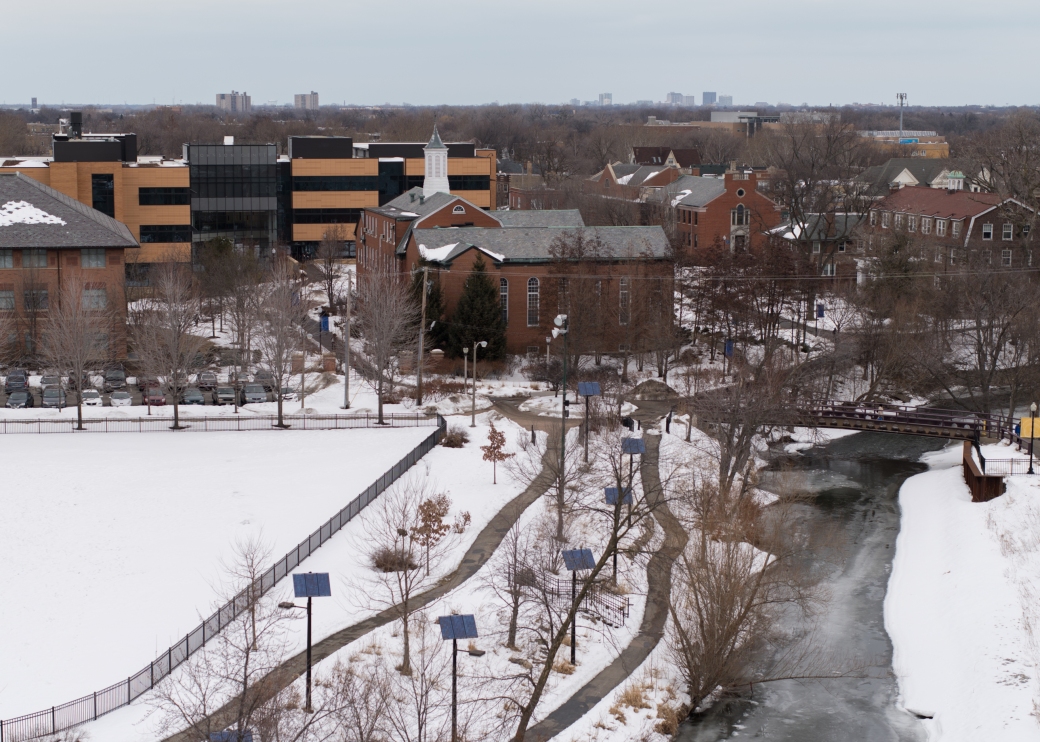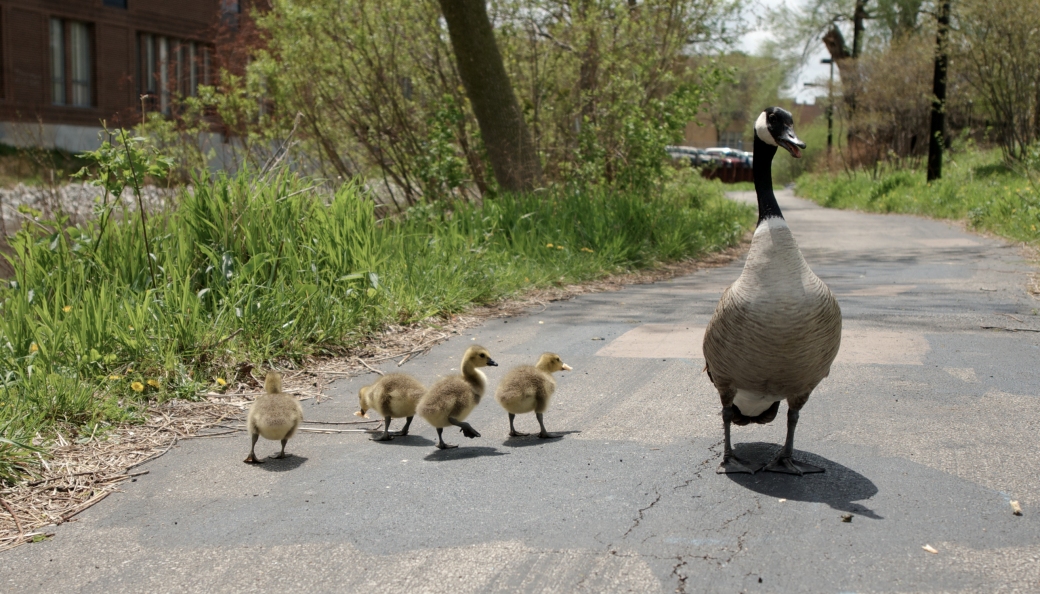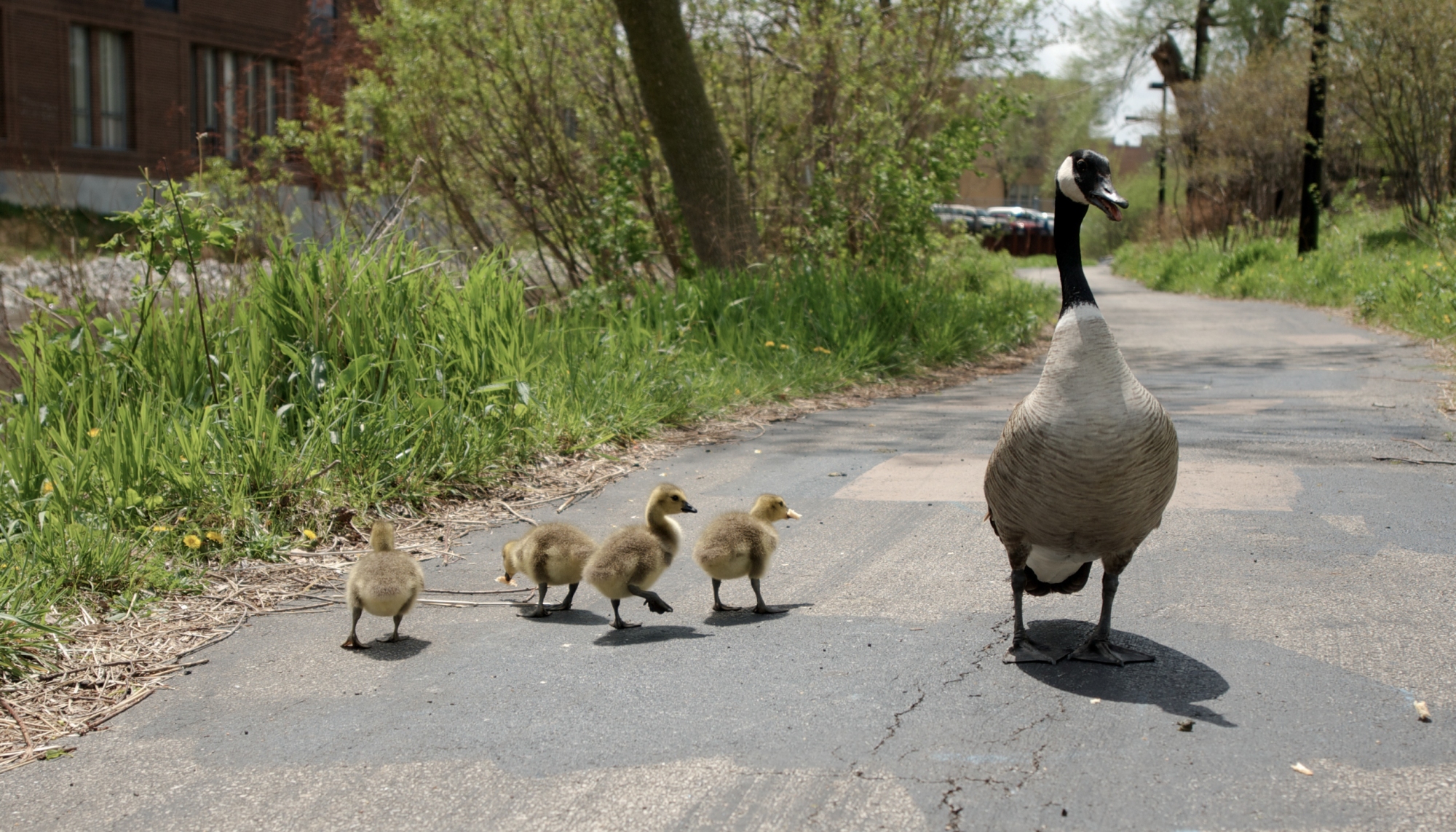By Caleb McCoy
North Park campus boasts many salient features ranging from the iconic brick of Old Main to the ivy crawling up Caroline Hall to the new gleaming steel and glass of the Johnson center. Yet all these features are eclipsed by the simple beauty of the North Branch of the Chicago River, the greatest feature of our campus.

Now, I know what you are thinking. Yes, I’m aware that it often stinks like dead fish. Yes, I’m aware that the bottom of the river, even on the clearest days, remains imperceptible through the murk. Yes, I’m aware that if you set any part of your body in the river, it will surely become covered in scarlet polka dots. Yet, the North Branch remains North Park campus’ most sublime feature. Why? Simply, because our small stretch of the river connects us to a wider world.
Spanning 155 miles, the Chicago River system begins its journey several miles north of campus in the suburb of Morton Grove. Here three tributaries—the West Fork, Middle Fork, and Skokie River—converge in Watersmeet Woods, marking the beginning of the North Branch. The river continues its journey south east, rambling through a series of golf courses and forest preserves until it passes through Labagh Woods on Foster Avenue. Its is here that the river begins to snake behind houses and apartment buildings in the neighborhood of Albany Park.
North Park’s little strip of the river begins at the Kimball bridge, meandering along Kiwanis Trail and forming a boundary between Von Steuben high school and NPU campus. After passing the foot bridge on the corner of Carmen and Spaulding, the river rolls past Caroline Hall and Carlson tower, under Kedzie Avenue, and past Holmgren field until it reaches River Park. Here, the river’s path though our campus ends as it pours over the dam, joining its forces with the North Shore Channel headed due south from Evanston.
With the added force of the NSC, the river widens and the current quickens. Eventually, the river meets another fork downtown at Wolf Point, where an influx of water from Lake Michigan sends the river southwest. The Chicago river rolls down the South Branch through the Sanitary and Shipping Canal river, and eventually into the Mississippi. In this way, North Park campus accounts for just one short chapter in the river’s long journey to the sea.
With the river’s presence here also comes a host of creatures that call this area home. Robins, cardinals, and black capped chickadees flit from branch to branch in the ironwood and London Plane trees that drink deep from the flowing river. Mallard ducks and Canadian geese drift downstream atop the river’s surface. Green and blue herons fish the shallows around the dam. At night, one can spot scavengers like opossum, raccoons, and even coyote as they dart through the prairie grasses that line the river’s banks. These plants and animals remind us that we inhabit an extra-human world: a world filled with an abundance of creatures living in their own unique way.

The next time you pass over the bridge, pause for a moment at the midpoint. Listen carefully. You may hear the most soothing sound I know—the bubbling laughter of the river as it glides gently over the stones beneath the bridge. Remember that water flowing underneath your feet is on a journey that started a few miles north of here and won’t end until it reaches the Atlantic Ocean. Look around. See the squirrels darting about the treetops and the duck nesting in the prairie grass. Remember you belong to a beautiful world—one shared with an array of diverse organisms. They, like us, call this river home.


















Recent Comments